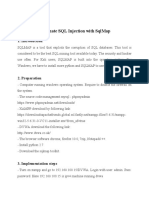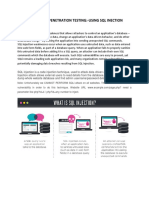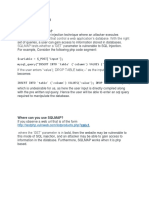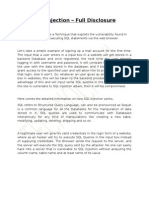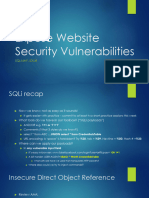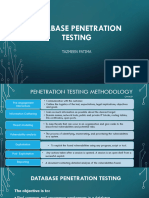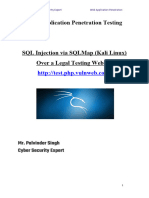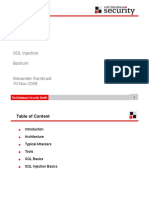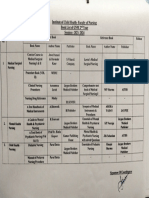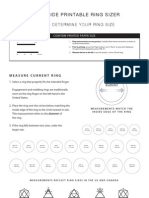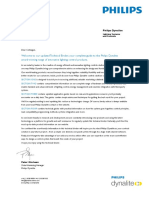0% found this document useful (0 votes)
109 views44 pagesModule 15
The document outlines a series of labs focused on SQL injection, detailing how to perform attacks using tools like sqlmap and OWASP ZAP, as well as leveraging AI technology through ShellGPT for enhanced penetration testing. It emphasizes the vulnerabilities associated with SQL injection, including authentication bypass and data compromise, and provides step-by-step instructions for executing these attacks and detecting vulnerabilities. The labs aim to equip ethical hackers and penetration testers with practical skills to assess and secure web applications against SQL injection threats.
Uploaded by
devangshuworkCopyright
© © All Rights Reserved
We take content rights seriously. If you suspect this is your content, claim it here.
Available Formats
Download as PDF, TXT or read online on Scribd
0% found this document useful (0 votes)
109 views44 pagesModule 15
The document outlines a series of labs focused on SQL injection, detailing how to perform attacks using tools like sqlmap and OWASP ZAP, as well as leveraging AI technology through ShellGPT for enhanced penetration testing. It emphasizes the vulnerabilities associated with SQL injection, including authentication bypass and data compromise, and provides step-by-step instructions for executing these attacks and detecting vulnerabilities. The labs aim to equip ethical hackers and penetration testers with practical skills to assess and secure web applications against SQL injection threats.
Uploaded by
devangshuworkCopyright
© © All Rights Reserved
We take content rights seriously. If you suspect this is your content, claim it here.
Available Formats
Download as PDF, TXT or read online on Scribd
/ 44

